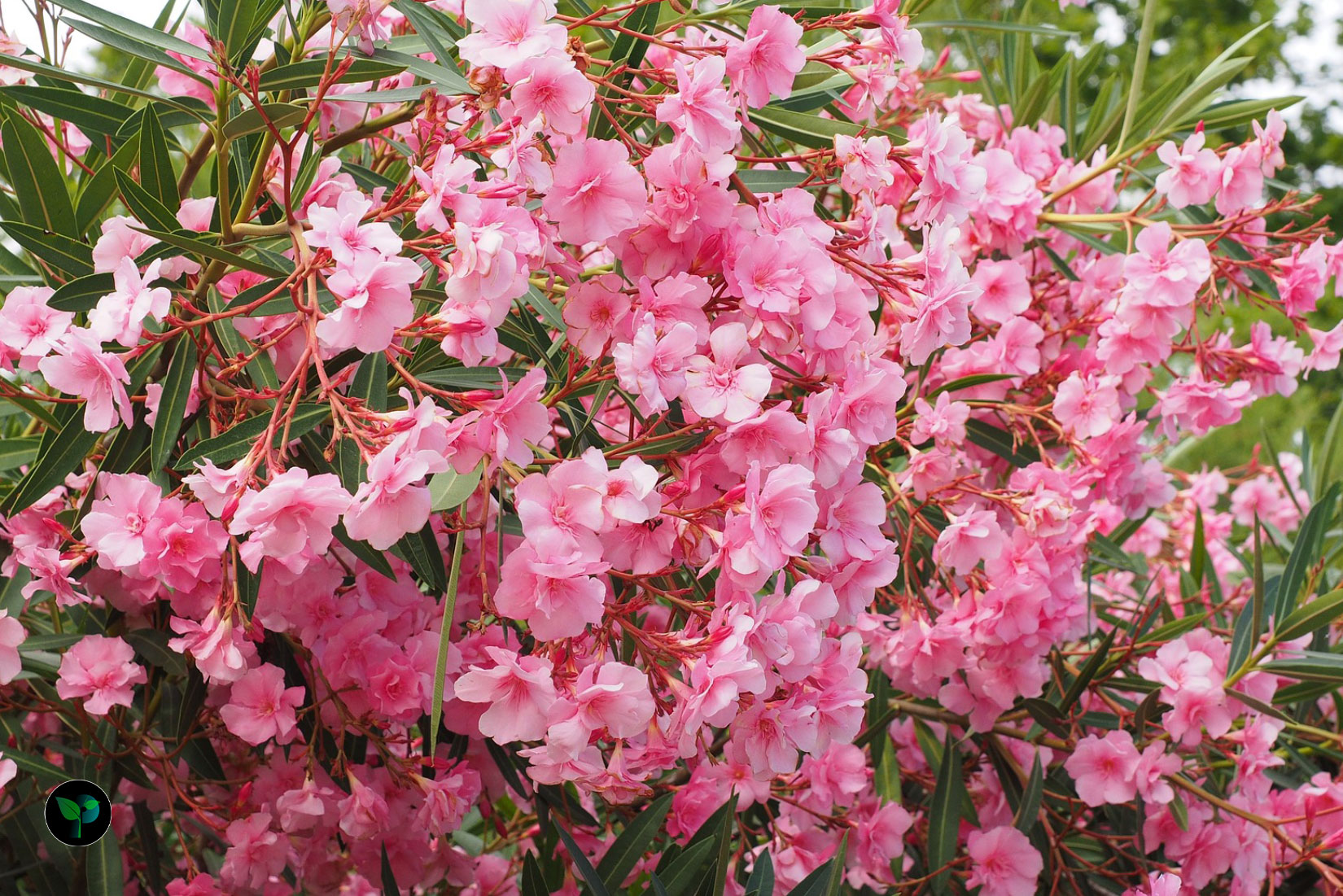Welcome, plant enthusiasts, to a new exploration into the world of botanical wonders here at Plants Folder! In this post, we delve into the alluring realm of Oleander (Kaner), a plant that captivates with its exquisite beauty and intriguing history. Join us on a journey as we uncover the secrets behind the Oleander plant—a species with a striking presence in gardens worldwide. From its vibrant, trumpet-shaped blossoms to its lance-shaped leaves, Oleander stands out as a symbol of beauty with a touch of danger lurking beneath its charming facade.
Discover the rich traditions and folklore intertwined with this plant, from ancient medicinal uses to symbolic meanings through the ages. However, tread cautiously, for hidden beneath its allure lies a potent reminder of its toxic nature, urging us to respect its beauty from a safe distance.
Dive into the vibrant world of Oleander with Plants Folder, where every leaf tells a story, and every bloom whispers a secret. Let’s embark on this botanical journey together, embracing the allure and mystery of the enchanting Oleander plant. The Kaner is an attractive yet highly toxic flowering plant that belongs to the dogbane family, Apocynaceae. It is native to a broad region from the Mediterranean to Southeast Asia and is widely cultivated in temperate and subtropical areas around the world for its decorative qualities.

Key points about the Kaner plant
– Toxicity: Oleander is considered one of the most poisonous plants known. All parts of the plant, including the leaves, flowers, and sap, contain toxic compounds called cardiac glycosides, which can be fatal if ingested.
– Appearance: It is a large shrub with long, lance-shaped leaves and showy, funnel-shaped flowers that come in shades of pink, red, white, or yellow, depending on the cultivar.
– Hardiness: they are resilient plants that can tolerate a variety of soil types and conditions. They are drought-tolerant and thrive in full sun.
– Fragrance: Some varieties of this plant have a sweet, lingering fragrance that adds to their appeal in gardens.
– Historical Significance: Throughout history, it has been used for various purposes, including as a medicinal plant and even as a method of poisoning during wars and disputes.
Fun Fact
– Mythology: In Greek mythology, it is associated with the story of Nerium, who was said to have been turned into the plant after attempting to seduce Zeus.
When it comes to Oleander (Nerium oleander), it’s important to note that while this plant has been historically used for certain purposes, it is primarily known for its ornamental value rather than its direct health benefits. Here are a few points to consider regarding the purported benefits associated with Oleander:
Possible Benefits
Traditional Medicine
In some cultures, parts of the Oleander plant have been used in traditional medicine for various conditions like coughs, asthma, and skin disorders. However, due to its high toxicity, extreme caution is required, and therapeutic use should only be under the supervision of trained professionals.
Research Potential
There is ongoing research into the potential medicinal properties of compounds found in this plant, particularly in the area of cancer treatment. Some studies have suggested that certain compounds derived from Oleander may have anti-cancer properties. However, this research is still in its early stages, and further studies are needed to confirm these findings.
Aesthetic Value of Kaner
Oleander is primarily valued for its ornamental beauty, with attractive flowers and foliage that make it a popular choice in gardens and landscapes.
Important Note
– Toxicity: It’s crucial to emphasize that Oleander is highly toxic and poses a severe risk if ingested. All parts of the plant contain poisonous compounds that can be harmful to humans and animals. Therefore, caution is essential when handling Oleander, and it should not be used for self-medication or consumed without expert guidance. While there is ongoing research into the potential benefits of Oleander, its toxic nature means that any medicinal use should be approached with extreme caution and expert guidance.
Groups that should not use
- Children: Children are particularly vulnerable to accidental ingestion of toxic plants. Since Oleander is highly poisonous, it should be kept out of reach of children and children should be educated about the potential dangers associated with this plant.
- Pets: Animals, especially dogs and cats, can be affected by Oleander toxicity if they ingest any part of the plant. Pet owners should be cautious with landscaping choices and ensure that pets cannot access these plants.
- Individuals with Pets: If you have pets in your household, it’s essential to be aware of the potential risks associated with this plant. Avoid planting it in areas accessible to pets to prevent accidental poisoning.
- Individuals with Medical Conditions: People with certain medical conditions or compromised immune systems may be more susceptible to the toxic effects of this plant. Individuals with health concerns should steer clear of handling or using this plant.
- Pregnant Women: Pregnant women should avoid contact with it, as the plant’s toxic compounds can pose a risk to both the mother and the developing fetus if ingested.
Key Takeaway
– General Precaution: In general, it’s crucial for anyone, regardless of age or health status, to exercise caution around this plant due to its toxicity. Avoid contact with the plant, especially ingestion of any part of it.



Leave a Reply